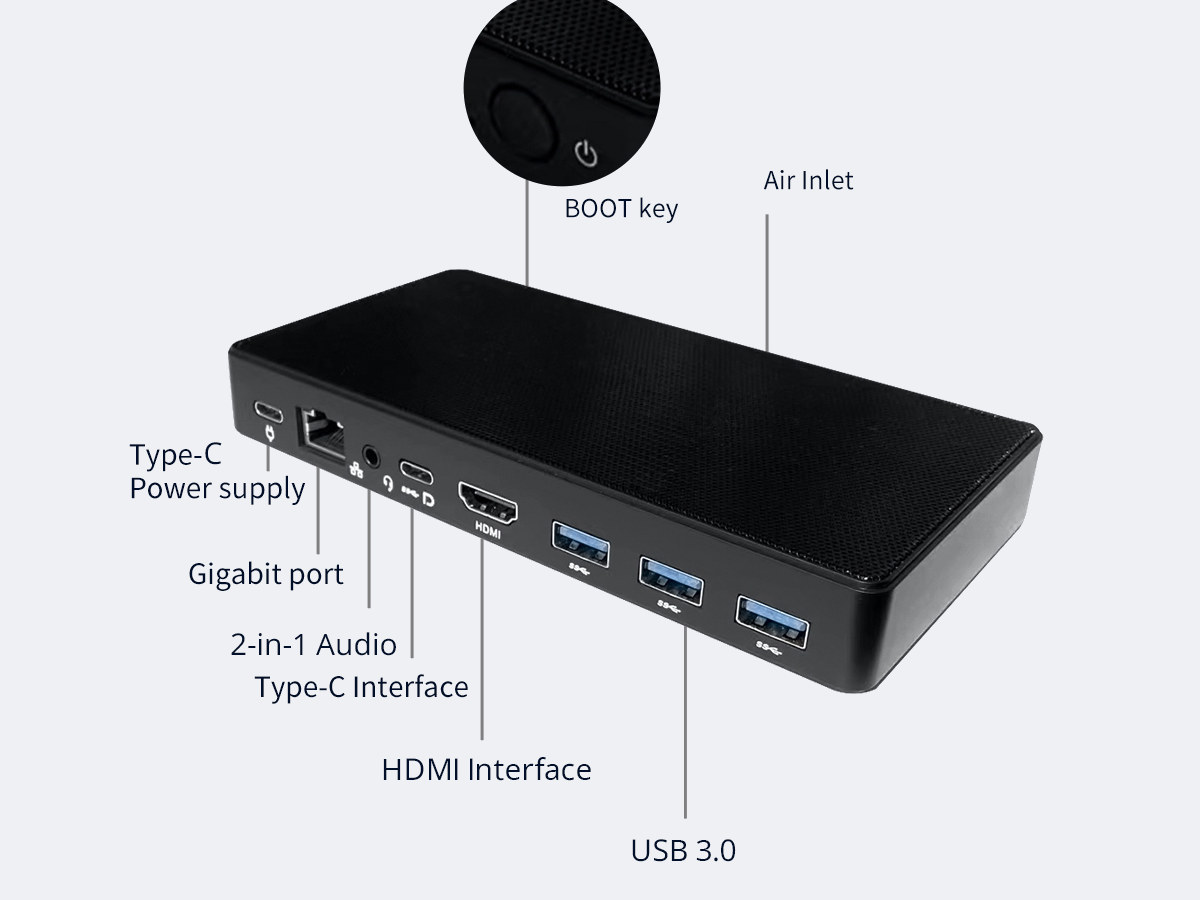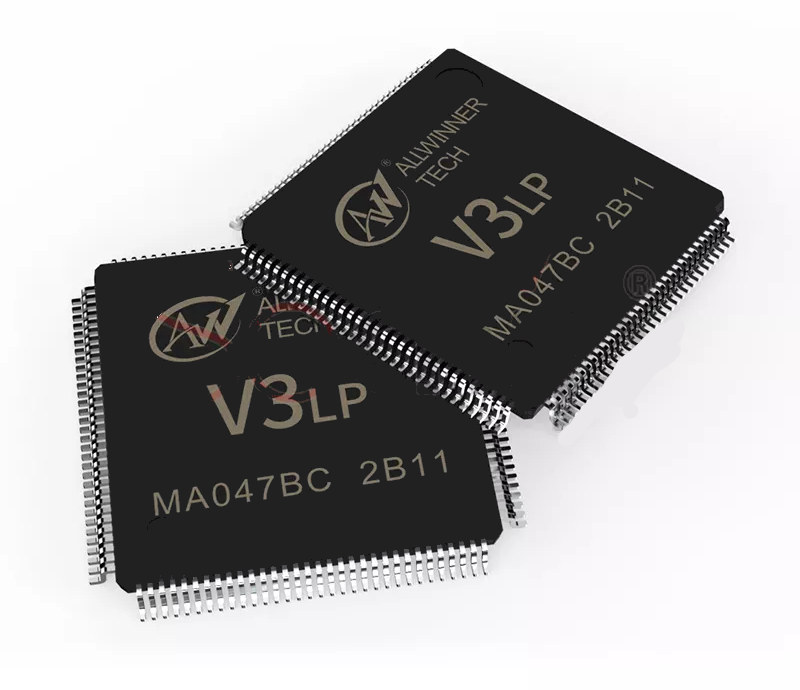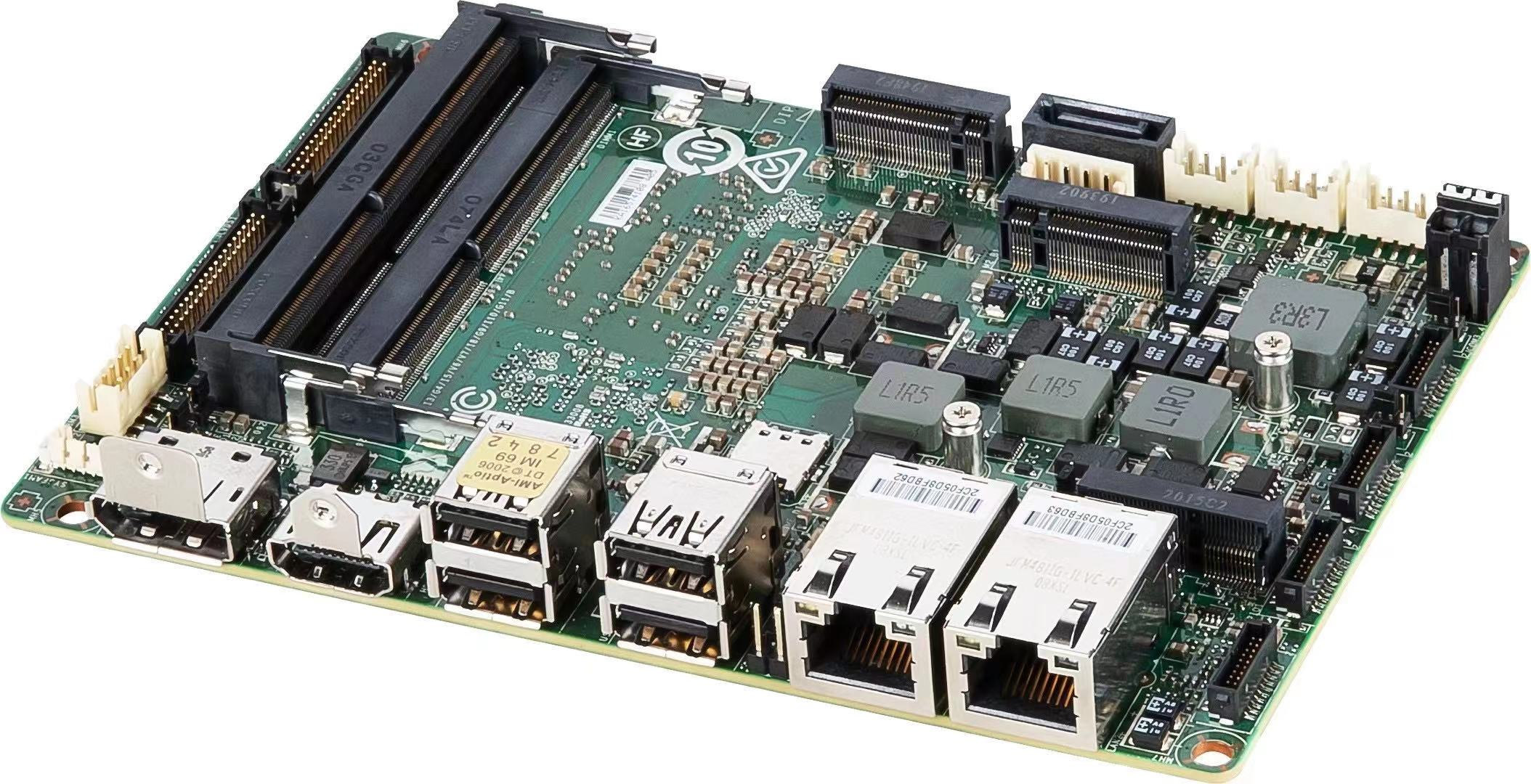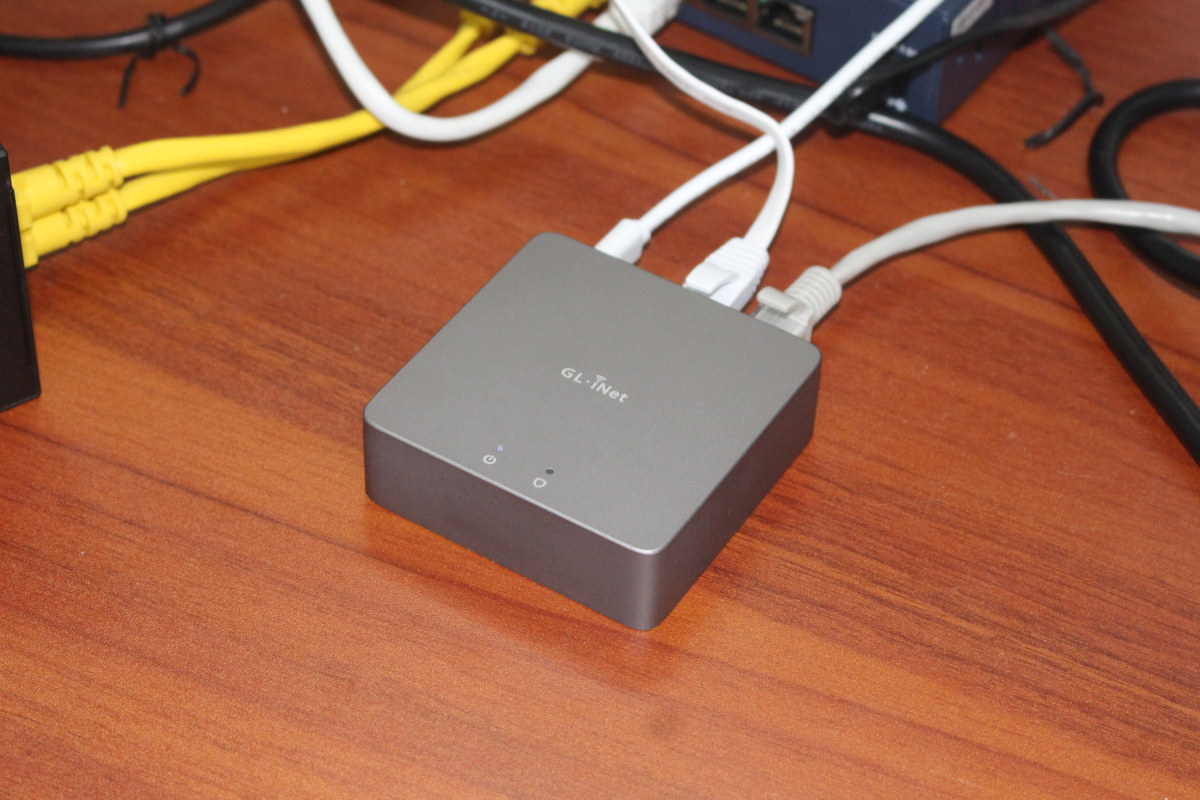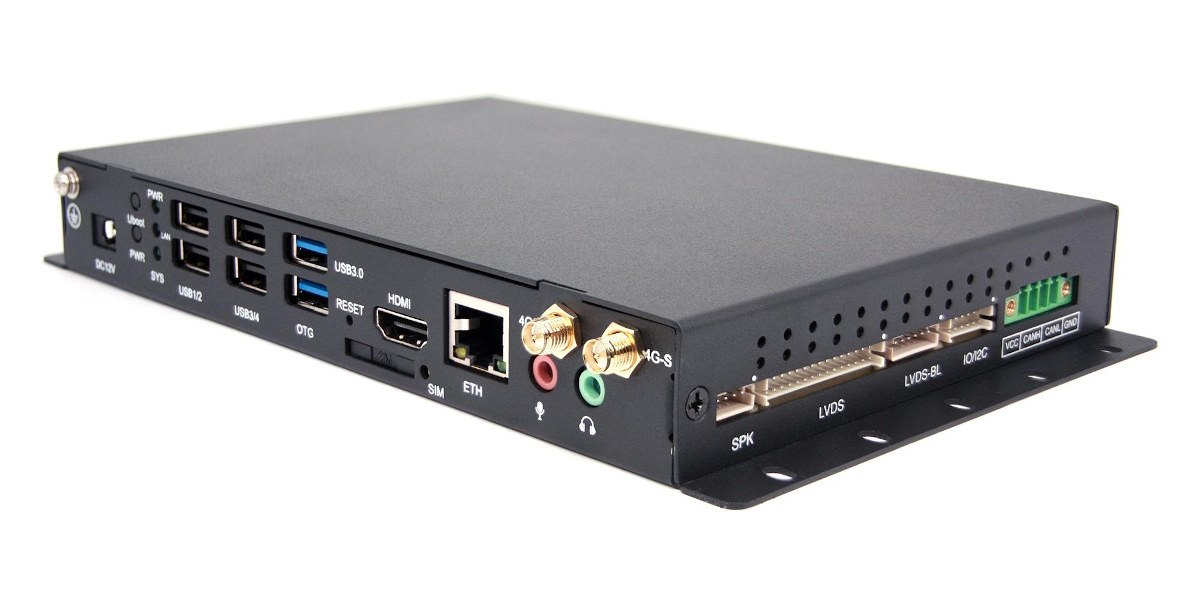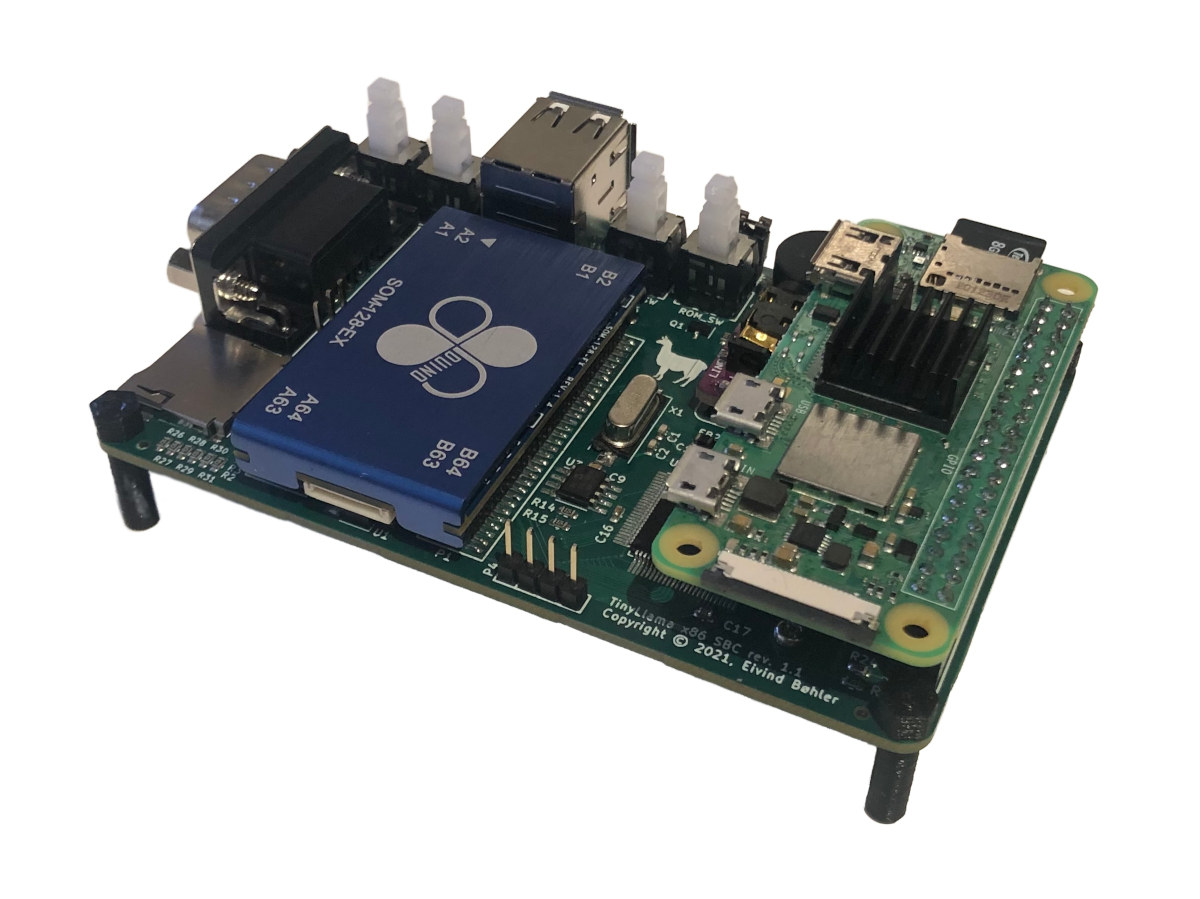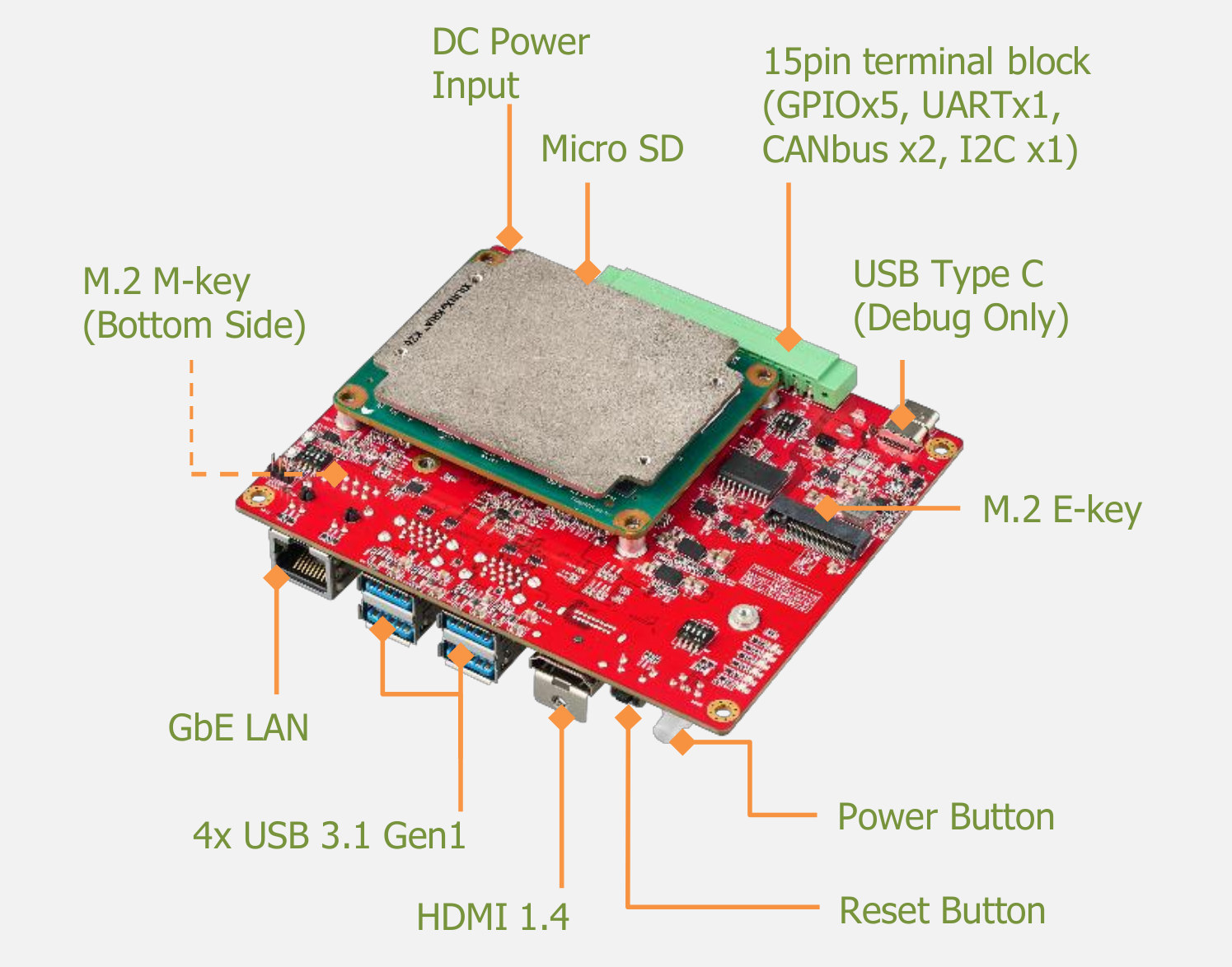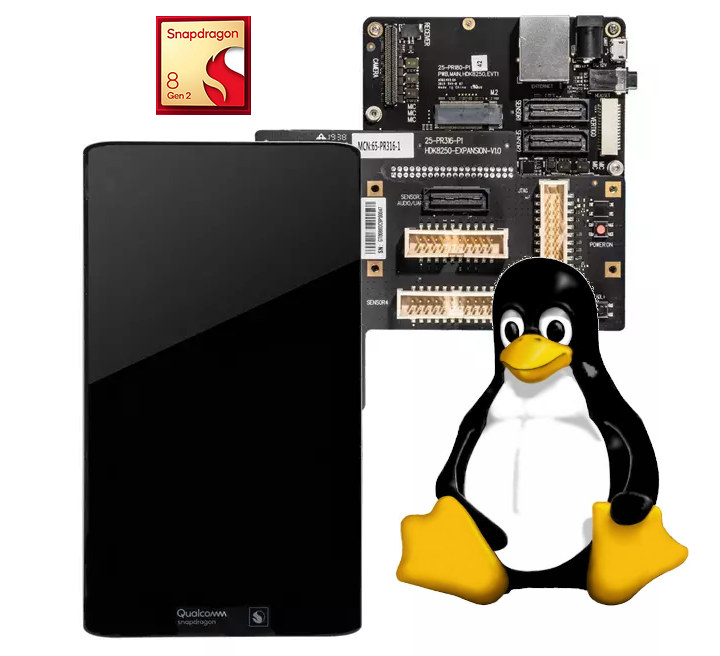There’s a plethora of mini PCs on the market, but due to their size, the ports are often placed on several sides which may make cable management troublesome. The JX1 mini PC, equipped with an Intel Celeron N5105 Jasper Lake processor, does not have this issue since all ports are accessible on the rear panel. The computer ships with 8GB RAM, up to 256GB SSD, and the rear panel comes with two USB Type-C port, one for power only, a Gigabit Ethernet port, a 3.5mm headphone jack, an HDMI ports, and three USB 3.0 ports. You’ll still find the power button on the front panel, and wireless connectivity is supported through a WiFi 6 and Bluetooth 5.2 module. JX1 mini PC specifications: SoC – Intel Celeron N5105 quad-core Jasper Lake processor @ 2.0GHz / 2.9GHz (Turbo) with Intel UHD graphics 605; 10W TDP System Memory – 8GB LPDDR4 Storage 128GB […]
Allwinner V3LP gets low voltage RAM, should replace Allwinner V3S dual camera SoC
Allwinner V3LP is a single-core Cortex-A7 processor for dual-camera systems with the exact same specifications as the Allwinner V3S processor introduced in 2016, except it should be more power efficient with a lower DDR operating voltage of 1.5V instead of 1.8V. Sochip explains that procuring the integrated DDR2 in the Allwinner V3s design is challenging, so Allwinner has replaced the memory in the pin-to-pin compatible Allwinner V3LP with more broadly available and lower power RAM. Allwinner V3LP specifications: CPU – ARM Cortex-A7 @ up to 1.2 GHz Memory – Integrated 64MB DDR2 DRAM @ 1.5 V Storage I/F – SD 2.0, eMMC 4.41, SPI NAND flash, SPI NOR flash Audio Codec – 92dB audio codec supporting 2x ADC channels and 2x DAC channels, 1x low-noise analog microphone bias output, 1x microphone input and 1x stereo microphone output Video Processing Unit Encoding – 1080p@40fps or 1080p@30fps + VGA@30fps H.264 Decoding – […]
MSI MS-98M3 3.5-inch SBC is made for autonomous mobile robots
MSI is better known for its consumer-grade motherboard and mini PCs, but they also have a division called MSI IPC (industrial PC) that makes embedded hardware such as the MS-98M3 3.5-inch single board computer (SBC) powered by an Intel Tiger Lake UP3 processor and designed for autonomous mobile robots (AMR). The SBC supports up to 64GB DDR4 RAM, SATA and NVMe storage, offers two 2.5 Gbps Ethernet ports, up to four display interfaces with HDMI, DisplayPort, LVDS and/or eDP, four USB 3.2 ports, M.2 expansion sockets for storage and wireless connectivity, as well as various other internal headers. MSI MS-98M3 specifications: Tiger Lake UP3 “IoTG” SoC (one or the other) @ 1.5GHz to 4.4GHz depending on SKU Embedded Intel Core i7-1185G7E/i5-1145G7E quad-core processor with Iris Xe graphics; TDP: 28W Intel Core i3-1115G4E dual-core processor with Intel UHD graphics; TDP: 28W Intel Celeron 6305E dual-core processor with Intel UHD […]
Brume 2 router review with WireGuard, OpenVPN, Tor, and Adguard Home
We started the review of GL.inet GL-MT2500A security gateway, aka Brume 2, with an unboxing and teardown, and I’ve now had time to test the router in more detail so I’ll report my experience using the router with OpenVPN and WireGuard VPN, Tor, Adguard Home, and more. In a nutshell, it’s super easy to use, unless your ISP causes troubles, which it did in this case. Brume 2 connection and initial setup I connected the WAN port of the Brume 2 router to 3BB’s modem router (3BB is an ISP in Thailand), the LAN port to my laptop, and finally the USB-C power supply (power draws is 2.3 Watts at idle). Let’s now go to the dashboard using the default IP (192.168.8.1). This will take us through the configuration wizard to select the language and set up the admin password. I was then immediately greeted by an “Upgrade Reminder” and […]
AIoTBOX-3568GK industrial control box offers six USB ports, RS232, RS485, CAN Bus, LVDS, and more
SMDT AIoTBOX-3568GK is an industrial control PC powered by a Rockchip RK3568 quad-core Cortex-A55 AIoT processor and offering plenty of interfaces including six USB ports, four RS232 ports, and terminal blocks with RS485 and CAN bus interfaces. The embedded computer ships with 2GB RAM and 16GB eMMC flash by default, and also features HDMI and LVDS display interfaces, 3.5mm jacks for headphones and microphone, as well as network connectivity through a Gigabit Ethernet port, WiFi, and optional Bluetooth and/or 4G LTE. AIoTBOX-3568GK specifications: SoC – Rockchip RK3568A quad-core Cortex-A55 processor @ up to 2.0GHz with Arm Mali-G52 2EE GPU with support for OpenGL ES 1.1/2.0/3.2, Vulkan 1.1, OpenCL 2.0, 0.8 TOPS NPU, and VPU with 4Kp60 H.265/H.264/VP9 video decoding, 1080p60 H.265/H.264 video encoding System Memory – 2GB RAM by default Storage – 16GB or 32GB eMMC flash, MicroSD card slot, optional 2KB EEPROM Video Output HDMI port up to 4Kp60 […]
TinyLlama x86 retro computer uses the Raspberry Pi Zero 2 W as a MIDI synthesizer
The TinyLlama x86 retro computer board is designed to run DOS games on a DM&P Vortex86EX 32-bit x86 processor and integrates a MIDI synthesizer based on Raspberry Pi Zero 2 running MT32-Pi firmware. Growing up playing games on 386/486-era computers, Eivind Bohler looked for similar recent hardware to play DOS games and after discovering the 86Duino x86 Arduino-compatible board, he decided to use the SOM-128-EX module powering the board to create the TinyLlama board with a Sound Blaster Pro-compatible Crystal CS4237B sound chip and a MIDI synthesizer. TinyLlama specifications: D&MP SOM-128-EX system-on-module with Processor – DM&P Vortex86EX 32-bit x86 processor @ 60 to 500 MHz System Memory – 128MB DDR3 Storage – 8MB SPI flash Storage – MicroSD card socket Video Output – VGA up to 1024×768 @ 60 Hz using the Vortex86VGA module running off an x1 PCI-e lane Audio Crystal CS4237B all-in-one audio chip MIDI synthesizer with Raspberry Pi […]
Innodisk EXMU-X261 FPGA Machine Vision Platform is based on AMD Xilinx Kria K26 SoM
Innodisk, better known for its embedded storage and memory chips, had announced its intention to turn to the AI market earlier and started with the launch of USB camera modules last month, but the company has gone a step (or two, or three) further with the introduction of the EXMU-X261 FPGA machine vision platform. The EXMU-X261 is powered by an AMD Xilink Kria K26 system-on-module and features HDMI 1.4 video output, Gigabit Ethernet, four USB 3.1 Gen 1 ports for the cameras and other peripherals, as well as two M.2 sockets and a terminal block for expansion. EXMU-X261 specifications: System-on-module – AMD Xilinx Kria K26 FPGA module powered by a Zynq UltraScale+ XCK26 FPGA MPSoC with a quad-core Arm Cortex-A53 processor, up to 250 thousand logic cells, and a H.264/265 video encoder/decoder Storage – MicroSD card socket Video Output – HDMI 1.4 port Networking – Gigabit Ethernet RJ45 port USB […]
Qualcomm Snapdragon 8 Gen 2 SoC gets upstream Linux support
Qualcomm unveiled the Snapdragon 8 Gen 2 mobile platform just a few days ago, but Linaro has just announced that Linux was already upstreamed to the premium mobile SoC featuring a 3.2 GHz Arm Cortex-X3 “Prime” core, four performance cores at up to 2.8 GHz, and three Efficiency cores clocked at up to 2.0 GHz. Most of the work was done by Linaro Engineers Abel Vesa and Neil Armstrong with initial support posted on November 16th on the Linux kernel mailing list, and with the set of patches released so far, it is even possible to boot a minimal AOSP image on a Snapdragon 8 Gen 2 development kit shown below which should be manufactured by Lantronix, if history is any guide. The following features are enabled in mainline Linux for the Qualcomm 8 Gen 2 processor, codenamed SM8550: Qualcomm Kryo CPUs with DVFS and Power Control support System – […]


